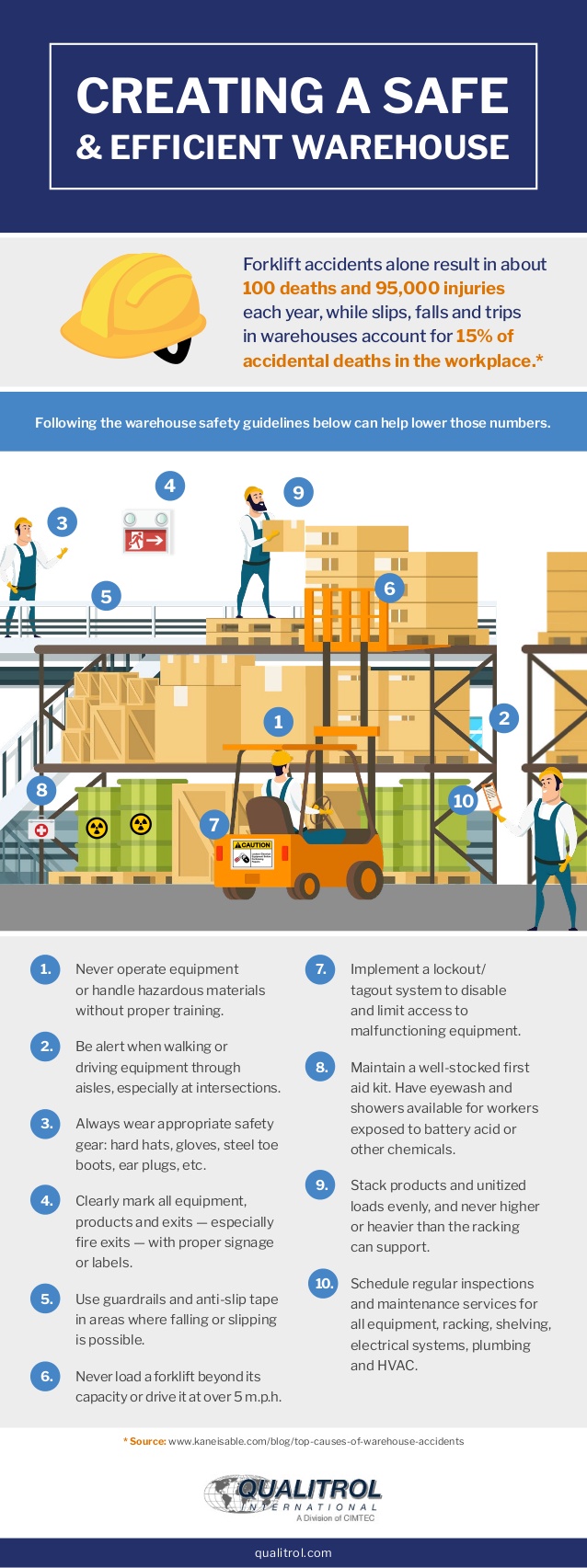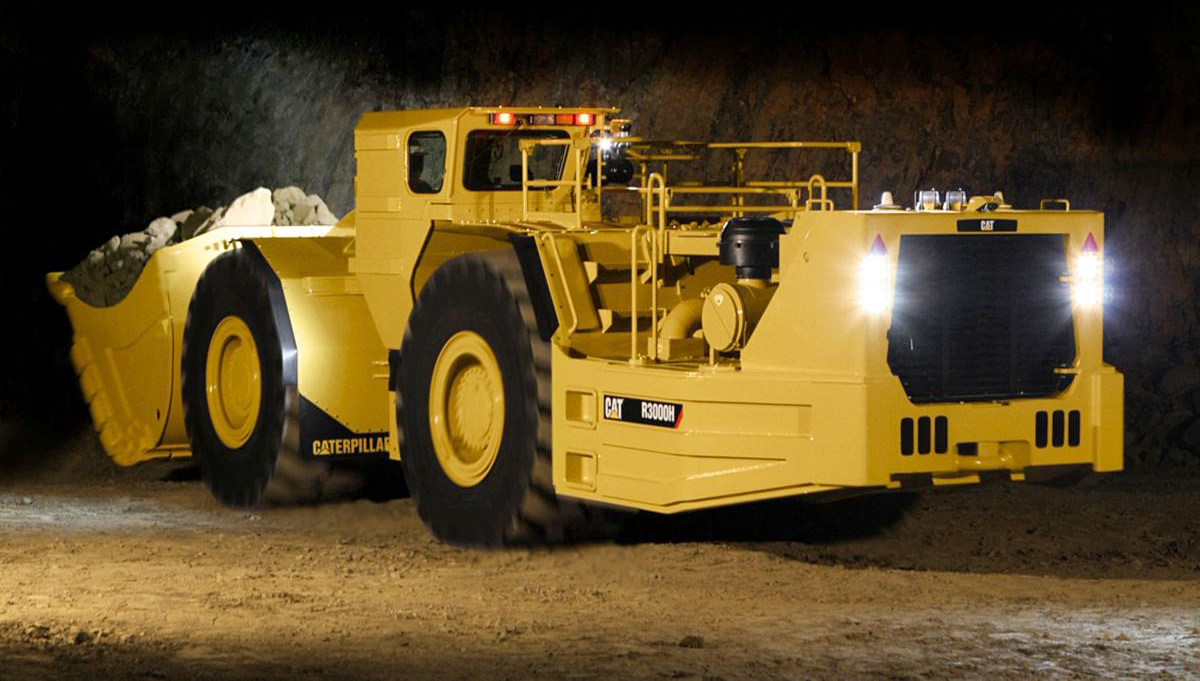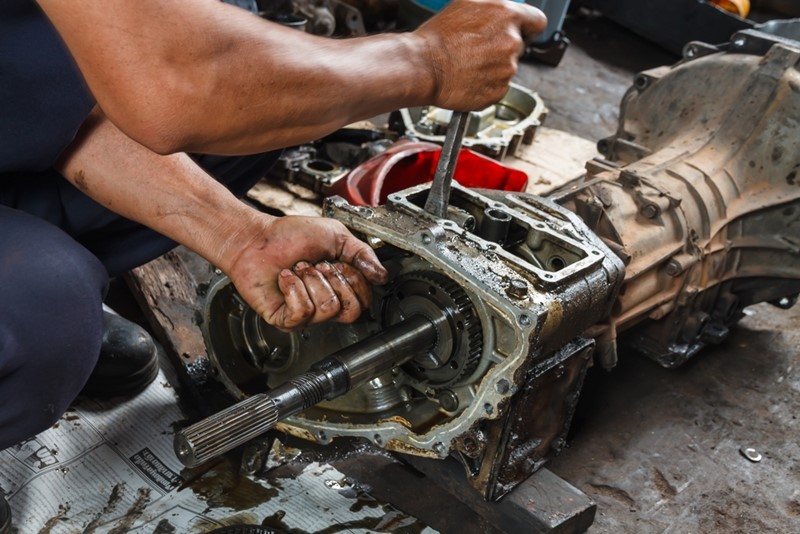-
Subscribe to Blog:
SEARCH THE BLOG
CATEGORIES
- Aerospace
- Asset Maintenance
- Automotive
- Blog
- Building Products
- Case Studies
- Chemical Processing
- Consulting
- Food & Beverage
- Forestry Products
- Hospitals & Healthcare
- Knowledge Transfer
- Lean Manufacturing
- Life Sciences
- Logistics
- Manufacturing
- Material Utilization
- Metals
- Mining
- News
- Office Politics
- Oil & Gas
- Plastics
- Private Equity
- Process Improvement
- Project Management
- Spend Management
- Supply Chain
- Uncategorized
- Utilities
- Whitepapers
BLOG ARCHIVES
- July 2025 (1)
- June 2025 (4)
- May 2025 (1)
- April 2025 (1)
- March 2025 (1)
- February 2025 (4)
- January 2025 (4)
- December 2024 (4)
- November 2024 (2)
- October 2024 (6)
- September 2024 (5)
- August 2024 (5)
- July 2024 (6)
- June 2024 (3)
- May 2024 (3)
- April 2024 (4)
- March 2024 (3)
- February 2024 (4)
- January 2024 (5)
- December 2023 (2)
- November 2023 (1)
- October 2023 (6)
- September 2023 (3)
- August 2023 (4)
- July 2023 (2)
- June 2023 (3)
- May 2023 (7)
- April 2023 (3)
- March 2023 (3)
- February 2023 (5)
- January 2023 (6)
- December 2022 (2)
- November 2022 (5)
- October 2022 (5)
- September 2022 (5)
- August 2022 (6)
- July 2022 (3)
- June 2022 (4)
- May 2022 (5)
- April 2022 (3)
- March 2022 (5)
- February 2022 (4)
- January 2022 (7)
- December 2021 (3)
- November 2021 (5)
- October 2021 (3)
- September 2021 (2)
- August 2021 (6)
- July 2021 (2)
- June 2021 (10)
- May 2021 (4)
- April 2021 (5)
- March 2021 (5)
- February 2021 (3)
- January 2021 (4)
- December 2020 (3)
- November 2020 (3)
- October 2020 (3)
- September 2020 (3)
- August 2020 (4)
- July 2020 (3)
- June 2020 (5)
- May 2020 (3)
- April 2020 (3)
- March 2020 (4)
- February 2020 (4)
- January 2020 (4)
- December 2019 (3)
- November 2019 (2)
- October 2019 (4)
- September 2019 (2)
- August 2019 (4)
- July 2019 (3)
- June 2019 (4)
- May 2019 (2)
- April 2019 (4)
- March 2019 (4)
- February 2019 (5)
- January 2019 (5)
- December 2018 (2)
- November 2018 (2)
- October 2018 (5)
- September 2018 (4)
- August 2018 (3)
- July 2018 (2)
- June 2018 (4)
- May 2018 (3)
- April 2018 (3)
- March 2018 (2)
- February 2018 (2)
- January 2018 (1)
- December 2017 (1)
- November 2017 (2)
- October 2017 (2)
- September 2017 (1)
- August 2017 (2)
- July 2017 (2)
- June 2017 (1)
- April 2017 (3)
- March 2017 (3)
- February 2017 (2)
- January 2017 (2)
- December 2016 (2)
- November 2016 (4)
- October 2016 (4)
- September 2016 (3)
- August 2016 (6)
- July 2016 (4)
- June 2016 (4)
- May 2016 (1)
- April 2016 (3)
- March 2016 (4)
- February 2016 (2)
- January 2016 (4)
- December 2015 (3)
- November 2015 (3)
- October 2015 (1)
- September 2015 (1)
- August 2015 (4)
- July 2015 (6)
- June 2015 (4)
- May 2015 (7)
- April 2015 (6)
- March 2015 (6)
- February 2015 (4)
- January 2015 (3)
CONNECT WITH US
Tag Archives: Preventive Maintenance
Downtime – the dreaded halt in production that can cripple a manufacturing operation. It’s more than just an inconvenience; it’s a hidden cost that can eat away at your profits. A recent study revealed that nearly 82% of businesses have experienced unexpected downtime in the past three years, with the average incident lasting four hours and costing a staggering $2 million. The impact goes beyond just financial losses – downtime can disrupt customer deliveries, delay critical projects, and erode trust with clients.
The Potential Culprits
One major factor is neglecting preventive maintenance. Regular servicing not only keeps equipment functioning smoothly but also allows technicians to identify potential problems before they snowball into major breakdowns.
Another hidden source is outdated equipment. Obsolete machinery can be a drag on your entire production line. Imagine a slow, malfunctioning piece of equipment holding up the entire process. This can put undue stress on other machines, leading to premature wear and tear, and ultimately, more downtime. Upgrading to newer, more efficient models can significantly improve production flow and reduce the risk of breakdowns. Outdated software can also be a culprit. Running outdated software can lead to compatibility issues with newer systems and leave your facility vulnerable to security breaches.
Beyond equipment and software, a lack of proper training for your workforce can also contribute to downtime. If operators don’t fully understand how a machine works, they might misuse it, leading to errors and breakdowns. Investing in comprehensive training empowers your employees with the knowledge and skills they need to operate machinery safely and efficiently, minimizing the risk of operator-induced downtime.
Finally, the importance of data tracking cannot be overstated. Keeping detailed logs of equipment issues and production hiccups allows you to identify recurring problems and implement preventative measures. Think of it as a historical record that helps you anticipate and address potential bottlenecks before they derail your production schedule.
Finding the Right Solution for You
The good news is that there are steps you can take to combat downtime and keep your production lines humming. Conducting risk audits to identify potential problems, installing sensors to monitor equipment health (like a torque transducer that detects excessive force on a rotating shaft), and implementing a comprehensive preventive maintenance program are all crucial steps in the battle against downtime.
Investing in employee training and partnering with reliable third-party service providers can further strengthen your defenses. By adopting a proactive approach to maintenance and addressing the root causes of downtime, you can significantly reduce disruptions and ensure your manufacturing operation runs smoothly and efficiently.
Want to learn more about the specific costs associated with different downtime causes? The following infographic breaks down the financial impact of various downtime triggers, helping you identify areas for improvement and optimize your production process for maximum uptime.
Given that powerful equipment and trucks frequently operate close to one another, warehousing is one of the riskier industries. Rapid growth in e-commerce is driving an ever-increasing demand for the delivery of products in shorter time frames. Industrial and commercial warehouses must meet this demand while maintaining the present standards for safety.
There are thousands of reports of injuries, illnesses, and deaths in the warehousing industry annually. Many of those are the result of industrial mishaps such as slips and falls, exposure to dangerous products, and defective equipment. Warehouse safety should be the employers’ utmost priority to keep employees safe, ensure efficient operation, maximize productivity, and minimize injury or damage.
Best Practices for an Efficient Warehouse
Preventive Maintenance
The majority of occupational dangers can be avoided by taking the following precautions:
- Recruitment & Training
- Safety Equipment & Precautions
- Hygiene & Pest Control
Planned Maintenance
Periodic maintenance can minimize equipment downtime and reduce maintenance costs. The fundamental maintenance advice listed below should be adhered to in order to maintain your warehouse operating at maximum capacity:
- Have A Maintenance Plan
- Stay Vigilant
- Ask Employees For Their Opinion
By regularly monitoring your warehouse equipment, spares, and procedures, and promoting the well-being of your personnel, you’ll not only increase the productivity of your warehouse, but you’ll also cut your losses if there’s an emergency or an accident. Make sure your warehouse is as secure as it can be by working with your staff.
The infographic below by 2Flow takes a look at ‘Creating A Safe & Efficient Warehouse’.
[click to enlarge]
If you need help with creating a safe and efficient warehouse in your facility, contact us today.
Minor snags in routine equipment maintenance procedures seem harmless, but can create enormous problems in your operations. Besides slowing down orders and causing havoc on your line, the costs of this unplanned downtime adds up significantly.
How much pain do routine maintenance problems really cause? The numbers are befuddling.
- $50 billion – The average cost to industrial manufacturers of unplanned downtime
- $2 million – The average cost of each case of unplanned downtime
- 70% – The percentage of companies that DO NOT track unplanned downtime
With these astounding stats, the focus then turns to how do we avoid the unplanned downtime in the first place.
Avoid these 7 routine maintenance problems
Manufacturers would benefit by getting ahead of the issues before they become problematic. Watch out for these routine maintenance hiccups:
- Preventive Maintenance Gaps
- Insufficient Operator Training
- Lack of On-Hand Spare Parts
- Insufficient Capital Budget
- Overreliance on Distant Third Parties
- Paper-Based Reporting
- Antiquated Controls and Monitoring Capabilities
Kaishan USA has compiled a comprehensive infographic detailing these 7 major maintenance issues to avoid in your daily operations…
Guide created by Kaishan USA
For techniques on how to improve your processes and enhance your maintenance practices, contact USC Consulting Group today. We can help you establish effective predictive and preventive maintenance programs to avoid unplanned downtime.
Does it seem like you’re always putting out fires? Not in the literal sense, of course. We’re talking about operations problems and snafus that seem to pop up at the most inconvenient times. Machines break down. Workers call in sick. Human errors can result in costly fixes. Unforeseen backups or bottlenecks slowing things down. Too much inventory. Not enough inventory. Some days, it can seem like you’re in a constant state of troubleshooting. The problem with that is, it’s hard to move forward into tomorrow when you’re consumed with putting out the fires of today.
Sound familiar? You’re not alone. At USC Consulting Group, we hear it a lot from the clients we partner with to increase efficiency and streamline operations at their facilities. Over the years, we’ve learned that the best course of action to break the cycle of constantly putting out fires is to get ahead of those problems before they become “fires.” Easier said than done, right? Actually, no. The way to do it is to implement an effective Management Operating System (MOS).
MOS 101
What is a Management Operating System, or MOS? Without using industry jargon, a MOS is simply a structured approach to operations. It’s intentional, forward-looking and at times anticipatory, in that it can help spot trouble before it spots you.
A good MOS is a set of tools, processes and frameworks that guide the operations of your business, namely the way employees work. It fosters continuous improvement to address issues as they occur. Or, ideally, before they occur.
Because many of the “fires” you’re stamping out every day can range from production shortfalls to problems related to worker safety, companies that use production lines or have other types of hazardous workplace environments commonly employ management operating systems.
Your MOS should be able to spot inefficiencies in an operating system before they become major problems. This ensures that adjustments can be made so operations are not adversely affected. An MOS should also use real-time feedback so an organization can safely direct operations, funding and other resources to maximize return on investment.
The best management operating systems center around four main components:
- Processes
- Systems
- Roles
- Structures
In other words, it maps out how the job gets done, in what way and by whom.
Let’s look at that in a little more detail.
When designing processes, businesses must be sure that they’re safe, secure and clear for employees to understand and tools are used to support operations — and never in ways that are not dictated by the overall structure. This means users should not use tools in inappropriate ways, especially those that could simply automate their inefficient methods. One process change we always recommend is preventative maintenance. Taking a little downtime today to service your machines can save major work stoppages tomorrow.
An effective MOS uses well-designed systems that help employees and the company as a whole achieve goals, which means they should run smoothly and enhance and even boost established efficiency.
Roles within an MOS should adhere to clearly defined job descriptions that require certain skill sets, and when combined with a business’ processes and systems can best utilize talents. The skills gap has only complicated the matter, but that’s fodder for another blog.
The best-run management operating systems always establish a business-wide structure upon which the different roles within the company interact. This is usually done last because it ensures that the processes do not dictate the entire established structure and cause further issues.
Read more about it in our blog, “How Can a Management Operating System Help Your Organization?”
Benefits of using a good MOS
Putting a carefully planned management operating system in place, one that is unique to your organization and its challenges and strengths, can result in a boatload of positive benefits. According to CEO Magazine, an MOS allows for an organization to “better control the flow of work and production, driving higher outcomes in customer service, quality and cost.”
At a minimum, these systems make use of tools that allow organizations to create plans for future work in certain operations, carry out that work, and then measure the work performance data to suggest future improvements that could be needed.
At maximum? Your company will perform with operational excellence, humming along at capacity, anticipating hiccups before they become problems, planning for growth or even downturns so you won’t be taken by surprise and generally making your life easier and your bottom line stronger.
Other ways an MOS can benefit you and your company:
- Cost savings
- Waste reduction
- Increased product quality
- Identification of workflow gaps
- Find ways to improve efficiency
- Get a handle on any compliance issues or regulations
- Elimination of impediments to your workflow
- Inventory wrangling (so you don’t have too much or too little despite supply chain bottlenecks)
A word about technology. Sure, you can automate your management operating system. Many companies do. But in our opinion, it can’t match good, old-fashioned brainpower, experience garnered through years on the line, common sense of longtime employees and forward-thinking ideas.
Ready to stop the firefighting mentality and talk about it? Give us a call or email us at info@usccg.com. We’ll listen first and then collaborate with you on a path toward operational excellence. It’s what we do.
Are you performing preventive maintenance on a regular basis? If you’re not, you may want to consider adding it to your schedule. Why? In a word, it’s about efficiency. In a few words (as its name suggests), it prevents problems before they start. Preventive maintenance is becoming the manufacturing industry standard. Roughly 80% of asset and facilities stakeholders are embracing the process as a way to cut costs, increase efficiency, and keep assets running like clockwork.
By performing regular preventive maintenance (or its cousin, data-based predictive maintenance) you are heading off problems, snafus and breakdowns at the pass. It’s about identifying and handling any potential issues that may be lurking down the road. The point is to find potential problems before they become real problems that could lead to delays and costly headaches.
The irony of preventive maintenance is that it can sometimes seem like it causes more problems than it solves. It requires regular downtime, which in itself is a problem. There’s also the tricky matter of timing. Finding the optimal time to perform the maintenance can be a delicate balance between shutting down for maintenance too soon and waiting too long.
But, the challenges are worth the rewards. Ensuring you have the proverbial well-oiled machine will make your operation more efficient and productive now and in the future.
Let’s take a look at preventive maintenance benefits and challenges and how it can help boost your operations.
Preventive maintenance benefits
The idea behind doing regular maintenance on the lifeblood of your manufacturing operations — your machinery — is to keep it humming along at optimal efficiency and prevent any problems that might occur. Benefits to making it a regular part of your business process include:
You control the downtime schedule. It’s true that performing maintenance requires downtime. You’ll experience a work stoppage because of it. However, the good news is, when that downtime happens is up to you. You can schedule it for slow periods and avoid your high-volume times. Build maintenance into your schedule as a regular part of your routine.
Fewer surprises. A snafu happens, something breaks, and you have to stop production to figure out what it is and fix it. That can happen at any time, and trust us, it will happen when you least want it to. Performing preventive, not reactive, maintenance will lessen those unwelcomed surprises that erode your productivity and profitability. A general rule is that planned work will cost two-thirds less than unplanned work in time and other resources.
Increased efficiency. At USC Consulting Group, we’re all about efficiency, and one of the surest ways to find “hidden efficiencies” that you didn’t even know were possible is to perform regular preventive maintenance on your machines.
Increased longevity of your machinery and assets. This is key. Just like your car needs regular oil changes and tune-ups to keep it running at its best, so do your assets.
Preventive maintenance challenges
There are some challenges with doing regular preventive maintenance. However, in our view, these don’t outweigh the benefits.
Finding the optimal time to do it is tricky. A regular schedule is the key to finding the best time to shut down for maintenance. And the downtime is typically where we see the most pushback from executives and managers who aren’t thrilled with this process.
It will cause shutdowns. There’s no way around it. To perform maintenance on your equipment, the line must stop.
If it ain’t broke, don’t fix it. This is an old adage for a reason. You may be shutting down for your scheduled maintenance when no problems actually exist. The shutdown does come at a productivity cost, so… is it worth it? Some manufacturers solve this issue by performing predictive maintenance instead. It’s a more complex process that is data driven, and analyzes how your assets are performing in real time. All’s well? No shutdown. But if you find problems, that’s when you act. It reduces downtime, and you’re not replacing any parts while they’re still good to go. The downside of this approach is complexity and connectivity. If you don’t have state-of-the-art machinery, you won’t get the data analytics that this process requires. That’s why the majority of manufacturers today are using the preventive approach.
At USC Consulting, we’ve been helping manufacturing businesses increase their efficiency, production, throughput and profits for more than half a century. Get in touch today if you’d like to learn more about how preventive maintenance benefits can boost your bottom line.
Manufacturers are always on the lookout for ways to strengthen their supply chains and warehouses. But while they probably pay close attention to picking speed and accuracy, they may overlook how important warehouse safety is to an effective facility. When accidents occur, they can create significant delays and cost overruns that have the potential to hurt much more than your profitability. For the protection of your people, products and bottom line, you should make maintaining a safe warehouse one of your top priorities.
For example, workers should never be allowed to operate equipment or handle hazardous materials without proper training. This needs to be reinforced constantly, not just mentioned once during a new hire’s orientation. The application of safety signs and instructions around the workplace paired with consistently accessible training seminars will help boost a facility’s warehouse safety significantly. In addition to providing employees with the necessary education, you also need to ensure that they have and use proper safety gear such as hard hats, ear plugs and goggles. If these items don’t fit correctly, they may as well not be available at all.
Another vital responsibility of employers is keeping up with regularly scheduled inspections and maintenance of equipment. These systematic checks can catch problems before they have an opportunity to create unsafe working conditions. The preventive maintenance methodology has become an industry standard for most organizations and, not only benefit the employees from a safety standpoint, but also generates maintenance savings and overall performance improvements.
Don’t let accidents become the weak link in your supply chain. For more tips on keeping your facility incident-free, see the accompanying infographic with efficient warehouse safety guidelines.
Author bio: Roy Pelkey is Vice President of Qualitrol. With more than 30 years of experience in executive management, sales, marketing and e-commerce businesses, Pelkey leads Qualitrol — the repair and services division of CIMTEC — which provides worldwide support of obsolete and discontinued automation products.
Heavy production assets are ubiquitous across numerous industries, from residential construction to mining. Keeping this mission-critical equipment up and running is among the top priorities for modern industrial organizations. It is why the average firm devotes almost 10 percent of its facilities budget to maintenance activities, according to researchers from Plant Engineering.
Virtually all of these entities leverage either predictive or preventive maintenance methodologies, both of which materialized in recent years due to widespread enterprise digitization. But how exactly are businesses deploying these strategies to ensure heavy production assets maintain peak performance? Here is an industry-agnostic look into the state of predictive and preventive maintenance best practices for heavy asset optimization:
Unpacking the preventive approach
An estimated 80 percent of maintenance teams employ preventive maintenance techniques, per survey data from Advanced Technology Services and Plan Engineering. The proactive approach centers on one operational goal: reducing production downtime. There are several associated best practices that guide preventive maintenance implementation and management.
Relinquishing the reactive approach to asset maintenance is the most impactful of these exercises. Unfortunately, it is also the hardest to adopt, Modern Materials Handling reported. Maintenance specialists that have traditionally listened for the cacophony of mechanical collapse and responded in turn must change their mindsets and instead focus on implementing piecemeal adjustments to mitigate the wear and tear that causes asset failure.
Making this cultural switch is no easy task – neither is reassessing all production and maintenance policies and procedures, and drafting new ones to comport with key performance indicators and company goals. However, four-fifths of maintenance teams have managed to execute these and the other preventive best practices on the way to transformation, including groups responsible for overseeing heavy assets.
Industrial organizations that excel at heavy machinery maintenance and effectively address small mechanical errors before they devolve into downtime-causing kinks focus on developing and sustaining routine asset optimization schedules, according to Reliable Plant. Through consistent check-ups and slight tweaks, maintenance teams responsible for bulky equipment can ensure these key production tools are always in good condition and ready to perform. Usage monitoring is also key, as heavy assets that are misused, either intentionally or unintentionally, typically break down the fastest.
How does usage monitoring unfold within an actual production workflow? A construction company preparing to excavate a new worksite might assess the climate and the soil to determine which backhoe digging attachment is not only best suited for the task at hand, but also the least likely to cause mechanical stress. These and other techniques make preventive maintenance possible, even with heavy assets in play.
Unpacking the predictive approach
When investments in heavy machinery began climbing dramatically more than a half decade ago, equipment manufacturers advised industrial companies to adopt asset tracking solutions to ensure that the multimillion-dollar tools they were deploying were actually required, The Wall Street Journal reported. At the same time, an innovative approach to maintenance, which also happened to be based on data analytics, was emerging.
This methodology, called predictive maintenance, would allow organizations to harness the power of advanced information technology to monitor mission-critical machinery in real-time, calculate the potential for future downtime and make improvements to avoid shutdown. In the years since this strategy materialized, many businesses have embraced it. In fact, 47 percent of industrial firms attest to deploying predictive maintenance processes and tools, per Advanced Technology Services and Plan Engineering.
Perhaps the most well-publicized and successful predictive maintenance programs have unfolded within organizations leveraging larger production assets. For example, construction equipment giant Caterpillar was among the first asset producers to manufacture products meant for use in predictive maintenance workflows, Forbes Magazine reported. The company began building bulldozers, dump trucks, excavators and other common equipment with pre-installed wireless sensors designed to transmit usable performance insights to maintenance leaders. Caterpillar customers have seen significant efficiency gains and cost reductions as a consequence of this forward-thinking equipment and the accompanying software.
Harley-Davidson is another early adopter that propelled predictive maintenance to new heights. Starting back in 2010, the automotive giant began outfitting the decades-old equipment in its York, Pennsylvania plant with wireless sensors configured to monitor mechanical operations and measure physical variables such as component vibration to assess asset performance, The Journal reported. These tools and the predictive maintenance program they facilitated led to drastic shop floor improvement, as Harley-Davidson watched production throughput times and costs decrease.
While impressive, these outcomes merely represent the initial stages of the predictive maintenance approach, according to PricewaterhouseCoopers. The rise of deployable enterprise artificial intelligence technology is expected to have an immense impact on this strategy, lending industrial firms the ability to monitor more data points across larger pools of equipment, including heavy assets.
That said, there is ample ground to cover before AI-propelled predictive maintenance workflows become industry standard. Most organizations inhabit the second position on the predictive maturity scale, per PwC, and therefore still depend on instrument inspections and other manual means. However, a significant number have entered stage three and now leverage real-time condition monitoring tools. Far fewer are in stage four, where expansive data-driven workflows capable of handling massive amounts of asset information are the norm.
In any case, predictive maintenance holds immense potential for teams assigned to heavy assets and, as the survey data from Advanced Technology Services and Plan Engineering indicates, a good number of the teams overseeing large machinery today have at least embraced some processes and tools associated with the strategy.
Implementing preventive and predictive maintenance strategies centered on heavy equipment can seem like an overwhelming task, especially for smaller industrial firms or those with particularly intense production demands. For businesses in these positions, external assistance could be all but necessary. USC Consulting Group has been helping organizations optimize their maintenance operations for decades, leveraging proven techniques and tools that accelerate change and lay the foundation for sustainable growth.
Connect with us today to learn more about our work and how we can help your company reduce heavy asset-related downtime.
Regularly scheduled repairs on capital-intensive assets are the cornerstone of any preventive, predictive, or proactive maintenance strategy in the industrial sector. By preempting outright equipment failures and counteracting small, nearly unnoticeable deficiencies in performance, businesses save cycle time, maintain product/service quality, optimize labor costs, prevent waste, keep operators safe, and preserve the lifespan of their most valuable machinery.
All these benefits aside, planned asset maintenance programs require plant managers and decision-makers to coordinate with technicians as to customizing a maintenance agenda that comports with the business at hand, whose operations may differ vastly from others. However, a few considerations are universal and enhance maintenance scheduling no matter where or how one works.
Consider capacity always
In the industrial sector, nothing should be more valuable to a business than production or service. To that end, companies dependent on advanced machinery rely on scheduled asset maintenance programs, first and foremost, to sustain uptime. Planned maintenance or tune-ups minimize the impact offline equipment has on the business’s bottom line.
Depending on the number of assets under a given planned maintenance program, it is possible to lose this edge because of –believe it or not – poor planning in regard to capacity. Let’s say you own a fleet of 100 delivery trucks and, on an average day, you need 90 up and running to accommodate your customers. Any maintenance schedule, therefore, could only address one-tenth of the fleet on any given day, otherwise, the work would compromise availability.
Capacity, unfortunately, is never that cut and dry. Maintenance management teams should always consider backlog, upcoming product/service changes, or seasonal demand metrics which may affect operations and respond intelligently.
Planned maintenance can deliver incredible value, so long as you’re doing it the right way.
Factor in labor costs
Reactive maintenance, or responding to failures after they occur, can cost a business significantly through emergency labor. A study by Maintenance Phoenix found businesses can spend nearly 20% of the total replacement cost for a given machine to remedy a single reactive maintenance event. Comparatively, proactive maintenance events generally cost just 1.4% of the same variable.
Expenses that low don’t happen automatically, so maintenance management teams should keep a few things in mind. First, it is almost always better to spread larger maintenance orders over a few shifts rather than tackling everything all at once. This leaves room in technicians schedule for other things that may crop up.
“Don’t let overtime negate the margin of savings reclaimed by switching to a planned program.”
Second, overtime expenses should be a major factor in planning, regardless of whether businesses employ in-house repair professionals or outsource. Typically, initiating a preventive, predictive, and proactive asset maintenance program involves hiring a few additional technicians. Scheduled maintenance during overtime hours may, therefore, negate the margin of savings reclaimed by switching to a planned program in the first place.
Prioritize work orders
Another benefit to scheduled maintenance is the ability to rank work orders in a low-risk environment. Reactive maintenance forces organizations to respond to situations as they arise, leaving little to no time to respond to anything else. Since planned maintenance catches failures before they happen – usually through embedded sensors and telemetry monitoring internal changes in temperature or vibration – the organizations that adopt such programs may be allowed windows of opportunity to handle repairs before experiencing the repercussions of leaving them unattended.
With that in mind, an asset-heavy company should not only create an actionable list of all their equipment and components, but rank those assets according to importance based on their respective business objectives. These lists should update after every major tech investment to ensure prioritization accurately reflects current operations. Advanced computerized maintenance management software (CMMS) could be a welcome addition to maintenance management system and help businesses develop both a master asset list and real-time asset hierarchies.
Making the change to scheduled asset maintenance delivers many competitive advantages, so use these tips to develop a more robust and effective program.
Comprehensive preventive maintenance and asset management ensure both the functionality, and efficiency of high-value equipment at a given business throughout its lifecycle. Yet, without an equally comprehensive auditing and optimization strategy for the ancillary processes around enterprise assets, businesses may accidentally overextend their operating budgets in unnecessary, preventable ways.
How can manufacturers, process industries, energy providers and other asset-intensive sectors optimize their preventive maintenance programs without hurting their productivity?
Reduce preventive maintenance schedule variance
When it comes to preventive maintenance, no matter how beneficial it may be to enhancing the performance of enterprise assets, it is possible to have too much of a good thing.

Is your maintenance schedule overbooked, underbooked, or just right?
Uneven scheduled downtime, for instance, could hike up operational costs in one of three ways:
- When preventive maintenance occurs too frequently, maintenance labor costs outweigh the threat posed by machine deficiency or outright failure. Balancing these costs is crucial to getting everything a business needs from its PM, but not overpaying for superfluous maintenance.
- Spacing scheduled preventive maintenance too far apart has its obvious consequences, like unintentionally allowing a small deficiency to exacerbate unnoticed.
- Choppy preventive maintenance schedules that vary hinder managers from planning strategically over the long term, both in an operational sense and financially.
Moreover, as The Maintenance Phoenix pointed out, scheduling variance could be the result of uncalibrated enterprise asset management software like computerized maintenance management systems (CMMS). Variance could also occur when maintenance professionals assigned repairs don’t carry out work orders within a tight timeframe. To cut down on preventive maintenance variance, businesses should assess their operational data, determine whether their maintenance programs suffer from any of these issues and take the needed corrective steps.
Minimize spare parts inventory management and costs
Traditionally, spare parts management follows along the same vein as asset management. In fact, there is considerable overlap between the two. Both preserve asset availability and mitigate the impact of downtime when it strikes.
That said, businesses must constantly work toward honing their spare parts inventory as much as possible without compromising the insurance these components provide asset uptime. Accomplishing this involves a two-pronged approach to spares: analysis and adjustment.
When a particular component within an asset breaks, an inventory of spare parts on hand accelerates the repair process. However, spare part inventory growth inexorably leads to cost increases, sometimes to the tune of as much as 20 percent or more of company expenditures, according to Life Cycle Engineering. Instead of adding a new batch of spares to the pile whenever assets appear to require them, it might be more cost-beneficial to perform root cause analysis on the “bad actor.”
For example, if a manufacturer spends $2,000 per month stocking fan belts for an asset integral to production, perhaps spending a little more on a one-time RCA cost may uncover why the asset churns through fan belts in the first place. A successful RCA, followed by corrective maintenance, could effectively eliminate the recurring cost entirely.
After tackling spare parts inventory, businesses should then be sure to adjust procurement plans accordingly so they represent the new optimized operations precisely and cut costs.














